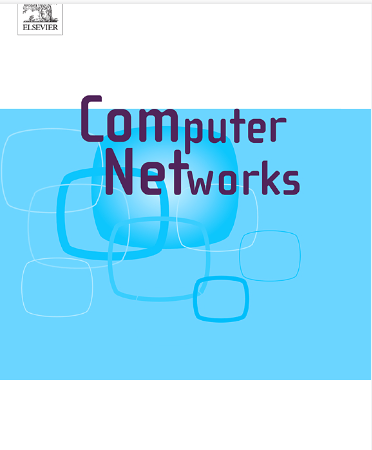Multi-Attack Identification and Mitigation mechanism based on multi-agent collaboration in Vehicular Named Data Networking
IF 4.4
2区 计算机科学
Q1 COMPUTER SCIENCE, HARDWARE & ARCHITECTURE
引用次数: 0
Abstract
This paper introduces a novel Multi-Attack Identification and Mitigation mechanism (MAIM) designed to enhance security within Vehicular Name Data Networking (VNDN), a derivative of Name Data Networking (NDN) optimized for the Internet of Vehicles (IoV). VNDN, while offering improved communication security for mobile networks, is vulnerable to interest flooding attacks. MAIM addresses this issue through a collaborative multi-agent system comprising detection algorithms, an identification model, and a mitigation model. The MAIM mechanism begins with vehicle nodes monitoring traffic and identifying potential threats, relaying this information to Road Side Units (RSUs), which utilize Random Forests to detect attacks. Detected threats are then communicated to the Base Station (BS), which employs Convolutional Neural Networks and Support Vector Machines to analyze and classify the attack type. The RSUs, informed by the BS, use Graph Convolution Networks to isolate malicious nodes, effectively mitigating the attack. Comparative simulation and real-world experiments demonstrate MAIM’s superior performance in attack recognition and mitigation, the average accuracy for attack detection is 97.5%, the average accuracy for attack identification reaches 85.2%, while the average interest satisfaction rate under attack suppression stands at 81%, highlighting its potential as a robust solution for securing VNDN environments.
车辆命名数据网络中基于多代理协作的多攻击识别与缓解机制
本文介绍了一种新的多攻击识别和缓解机制(MAIM),旨在增强车辆名称数据网络(VNDN)的安全性,VNDN是针对车联网(IoV)优化的名称数据网络(NDN)的衍生产品。VNDN虽然为移动网络提供了更好的通信安全性,但容易受到兴趣泛滥攻击。MAIM通过包含检测算法、识别模型和缓解模型的协作多代理系统解决了这一问题。MAIM机制首先由车辆节点监控交通并识别潜在威胁,将这些信息传递给路边单元(rsu),后者利用随机森林检测攻击。检测到的威胁随后被传送到基站(BS),基站使用卷积神经网络和支持向量机对攻击类型进行分析和分类。rsu在BS的通知下,使用图卷积网络来隔离恶意节点,有效地减轻了攻击。对比仿真和实际实验表明,MAIM在攻击识别和缓解方面具有优异的性能,攻击检测的平均准确率为97.5%,攻击识别的平均准确率达到85.2%,而攻击抑制下的平均兴趣满意度为81%,突显了其作为保护VNDN环境的强大解决方案的潜力。
本文章由计算机程序翻译,如有差异,请以英文原文为准。
求助全文
约1分钟内获得全文
求助全文
来源期刊

Computer Networks
工程技术-电信学
CiteScore
10.80
自引率
3.60%
发文量
434
审稿时长
8.6 months
期刊介绍:
Computer Networks is an international, archival journal providing a publication vehicle for complete coverage of all topics of interest to those involved in the computer communications networking area. The audience includes researchers, managers and operators of networks as well as designers and implementors. The Editorial Board will consider any material for publication that is of interest to those groups.
 求助内容:
求助内容: 应助结果提醒方式:
应助结果提醒方式:


